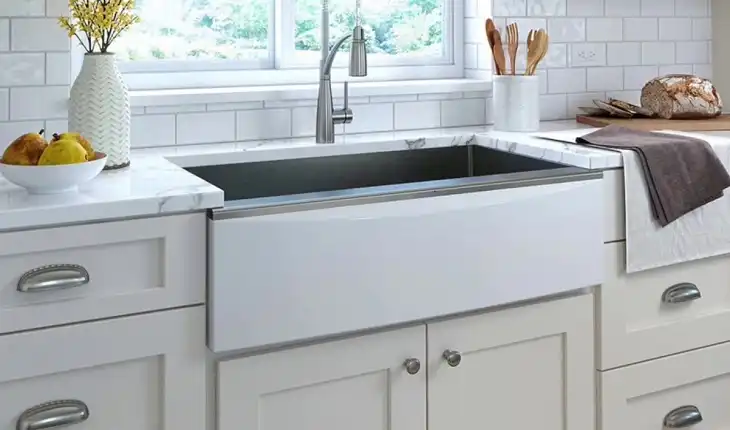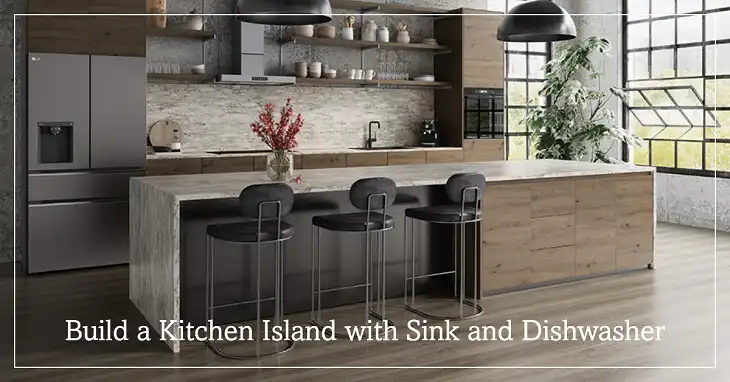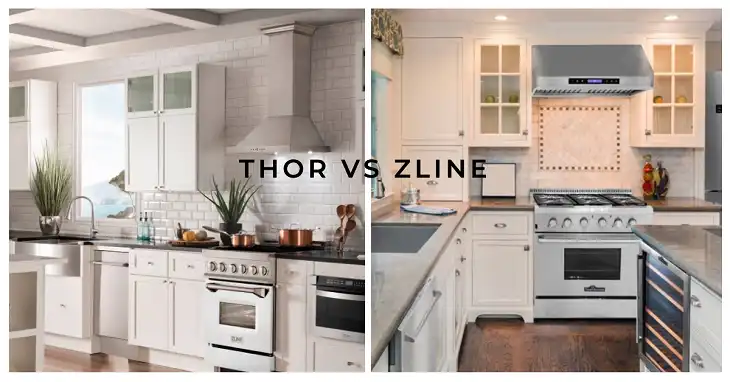Sink Not Centered in Base Cabinet: Solutions and Considerations

Discovering your kitchen sink isn’t perfectly centered under the window or within its base cabinet can be a frustrating revelation during a renovation.
While some homeowners find themselves losing sleep over a few inches of misalignment, others barely notice the difference.
This common kitchen dilemma raises important questions about aesthetics, functionality, and the cost-benefit analysis of potential fixes.
Whether you’re dealing with an existing off-center sink or planning a new kitchen layout, understanding the causes, solutions, and considerations surrounding this issue can help you make informed decisions about your space.
In this article, we’ll explore various approaches to addressing an off-center sink, from simple decorative tricks to more involved structural changes.
And also help you determine whether centering your sink is worth the effort or if embracing asymmetry might be the better choice for your kitchen.
Common Reasons for Off-Center Sinks
Before we dive into solutions, let’s look at why sinks end up off-center in the first place. It’s not always a mistake – sometimes it’s intentional, and other times it’s a result of unexpected changes during renovation.
1. Cabinet Installation Errors
The most straightforward reason is human error. Even experienced contractors can make mistakes, especially when working with custom cabinetry or dealing with last-minute changes.
A few inches here or there might not seem like a big deal during installation, but it can make a noticeable difference in the final layout.
2. Design Changes During Renovation
Renovations rarely go exactly as planned. You might discover plumbing issues, structural challenges, or simply change your mind about certain aspects of the design. These mid-project adjustments can lead to shifts in cabinet placement, which may result in an off-center sink.
3. Intentional Asymmetry for Functionality
Believe it or not, some homeowners and designers choose to place sinks off-center on purpose. This can create more usable counter space on one side, which is particularly useful in smaller kitchens or specialized areas like coffee stations.
Solutions for Off-Center Sinks

Now that we understand why sinks might end up off-center, let’s explore some ways to address the issue – or make it work for your space.
1. Decorative Fixes
If you’re not ready to rip out cabinets or redo plumbing, there are some simple decorative solutions that can help balance the visual weight of your kitchen.
Plants and Decor
Adding a few well-placed plants or decorative items can draw the eye away from the off-center sink. A trailing plant on the windowsill or a stylish soap dispenser can help create a more balanced look without any major changes.
Asymmetrical Window Treatments
If your sink is off-center in relation to a window, consider using asymmetrical curtains or shades. This can create an intentional look that complements the sink placement rather than highlighting its misalignment.
2. Structural Changes
For those willing to invest more time and money, there are some structural changes that can address the issue more directly.
Wider Sink Options
If your sink is only slightly off-center, installing a wider sink might be a solution. This can help fill the space more evenly and make the off-center placement less noticeable. Just be sure to check that your plumbing can accommodate a larger sink before making this change.
Adjusting Cabinet Layout
In some cases, it might be possible to adjust the cabinet layout to center the sink. This could involve replacing one or more cabinets with different sizes or adding filler pieces. It’s a more involved solution but can provide a perfectly centered result if that’s your goal.
3. Visual Tricks
Sometimes, the best solution is to embrace the asymmetry and use visual tricks to create a balanced look.
Centering Faucet with Window
Even if the sink basin itself is off-center, you might be able to center the faucet with the window. This can create the illusion of alignment and satisfy that desire for symmetry.
Adding Accessories to Balance Space
Strategically placing accessories like a dish drying rack, cutting board, or decorative tray can help balance out the space and make the off-center placement feel intentional.
Pros and Cons of Centered vs. Off-Center Sinks
Before you decide whether to fix your off-center sink or learn to love it, consider these pros and cons:
1. Aesthetic Considerations
Centered sinks often provide a clean, symmetrical look that many find pleasing. However, off-center sinks can create visual interest and allow for more creative design choices. It really comes down to personal preference and the overall style of your kitchen.
2. Functional Benefits
Off-center sinks can provide more continuous counter space on one side, which can be great for food prep or small appliances. Centered sinks, on the other hand, often provide more balanced workspace on both sides, which some cooks prefer.
When to Fix vs. When to Live With It
Deciding whether to fix an off-center sink or embrace it as-is depends on several factors:
1. Cost Considerations
Fixing an off-center sink can be expensive, especially if it involves moving plumbing or replacing countertops. Weigh the cost against how much the asymmetry bothers you.
2. Project Timeline Impact
Addressing an off-center sink can significantly extend your renovation timeline. If you’re already living through a kitchen remodel, consider whether you’re willing to prolong the process.
3. Personal Tolerance for Asymmetry
Some people barely notice an off-center sink, while others find it endlessly irritating. Be honest with yourself about how much it will bother you in the long run.
Preventing Off-Center Sinks in Future Projects
If you’re planning a kitchen renovation or building a new home, here are some tips to ensure your sink ends up where you want it:
- Communicate clearly with your designer and contractor about the importance of sink placement.
- Double-check measurements and layouts before cabinets are installed.
- Consider the placement of windows, appliances, and other fixtures when deciding on sink location.
- Be prepared to make decisions quickly if issues arise during installation.
Conclusion
An off-center sink doesn’t have to be a kitchen disaster. Whether you choose to fix it, disguise it, or embrace it, the most important thing is that your kitchen works for you.
Remember, perfection in home design is subjective – what matters most is that you enjoy your space and that it meets your needs.
So take a step back, consider your options, and choose the solution that feels right for your home and lifestyle.
After all, a slightly off-center sink with a great story behind it might just add that touch of character that makes your kitchen uniquely yours.
Frequently Asked Questions
1. Does The Sink Need To Be Centered?
There are no hard and fast rules about whether a sink needs to be centered. It largely depends on personal preference and the design of your kitchen or bathroom. Centering can provide a symmetrical and balanced look, but off-center sinks can offer more counter space and flexibility in certain layouts.
2. How Do I Fix The Gap In My Sink?
To fix the gap in your sink, apply a bead of silicone caulk around the edges where the sink meets the countertop. Make sure the area is clean and dry before applying the caulk. Smooth the caulk with a caulking tool or your finger for a neat finish, and let it cure according to the manufacturer’s instructions.
3. How Do You Position A Sink On A Cabinet?
Positioning a sink on a cabinet involves ensuring the sink is centered over the cabinet’s base or placed according to your design preference.
Measure the cabinet and mark the center point or desired location. Cut the necessary hole in the countertop, ensuring it aligns with the plumbing fixtures below. Secure the sink according to the manufacturer’s instructions.
4. Should Cabinet Above Sink Be Higher?
Yes, the cabinet above the sink should be higher than standard cabinets to provide ample headroom and prevent any obstruction while using the sink. Typically, placing the cabinet at least 24 inches above the sink is recommended to ensure comfortable access and usability.
5. Can A Sink Drain Be Off Center?
Yes, a sink drain can be off-center. Off-center drains can provide more usable space within the sink and make it easier to install plumbing in tight spaces. However, ensure that the plumbing is correctly aligned to prevent drainage issues and maintain functionality.





